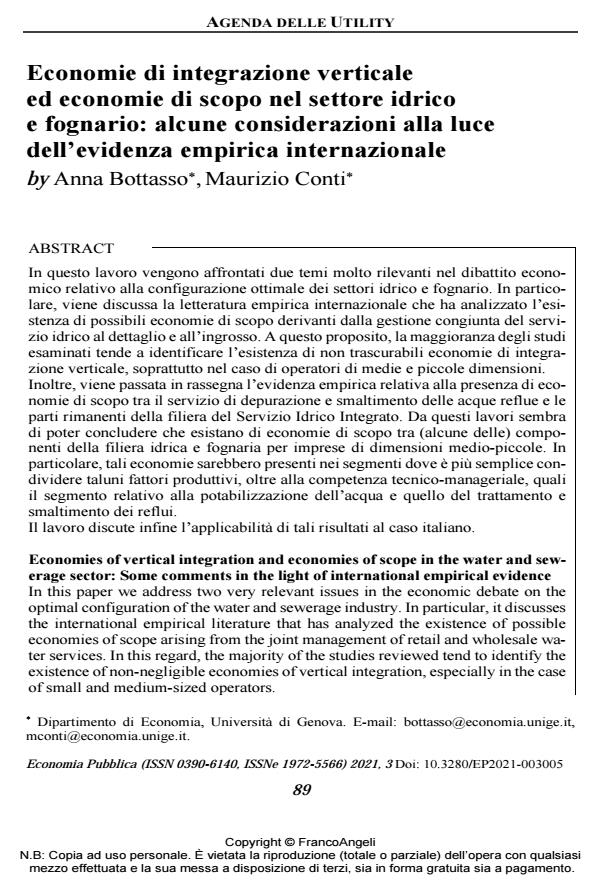Economies of vertical integration and economies of scope in the water and sewerage sector: Some comments in the light of international empirical evidence
Journal title ECONOMIA PUBBLICA
Author/s Anna Bottasso, Maurizio Conti
Publishing Year 2021 Issue 2021/3
Language Italian Pages 40 P. 89-128 File size 351 KB
DOI 10.3280/EP2021-003005
DOI is like a bar code for intellectual property: to have more infomation
click here
Below, you can see the article first page
If you want to buy this article in PDF format, you can do it, following the instructions to buy download credits

FrancoAngeli is member of Publishers International Linking Association, Inc (PILA), a not-for-profit association which run the CrossRef service enabling links to and from online scholarly content.
In this paper we address two very relevant issues in the economic debate on the optimal configuration of the water and sewerage industry. In particular, it dis-cusses the international empirical literature that has analyzed the existence of possible economies of scope arising from the joint management of retail and wholesale water services. In this regard, the majority of the studies reviewed tend to identify the existence of non-negligible economies of vertical integration, es-pecially in the case of small and medium-sized operators. In addition, empirical evidence is reviewed regarding the presence of economies of scope between the wastewater treatment and disposal service and the remain-ing parts of the Integrated Water Service chain. From these works it seems to be possible to conclude that economies of scope exist between (some of) the com-ponents of the water and sewerage chain for small and medium sized compa-nies. In particular, such economies would be present in the segments where it is easier to share certain production factors, in addition to technical-managerial expertise, such as the segment related to water purification and that of wastewater treatment and disposal. Finally, the paper discusses the applicability of these results to the Italian case
Keywords: water industry, economies of scope, vertical integration
Jel codes: L51, L95
Anna Bottasso, Maurizio Conti, Economie di integrazione verticale ed economie di scopo nel settore idrico e fognario: alcune considerazioni alla luce dell’evidenza empirica internazionale in "ECONOMIA PUBBLICA " 3/2021, pp 89-128, DOI: 10.3280/EP2021-003005